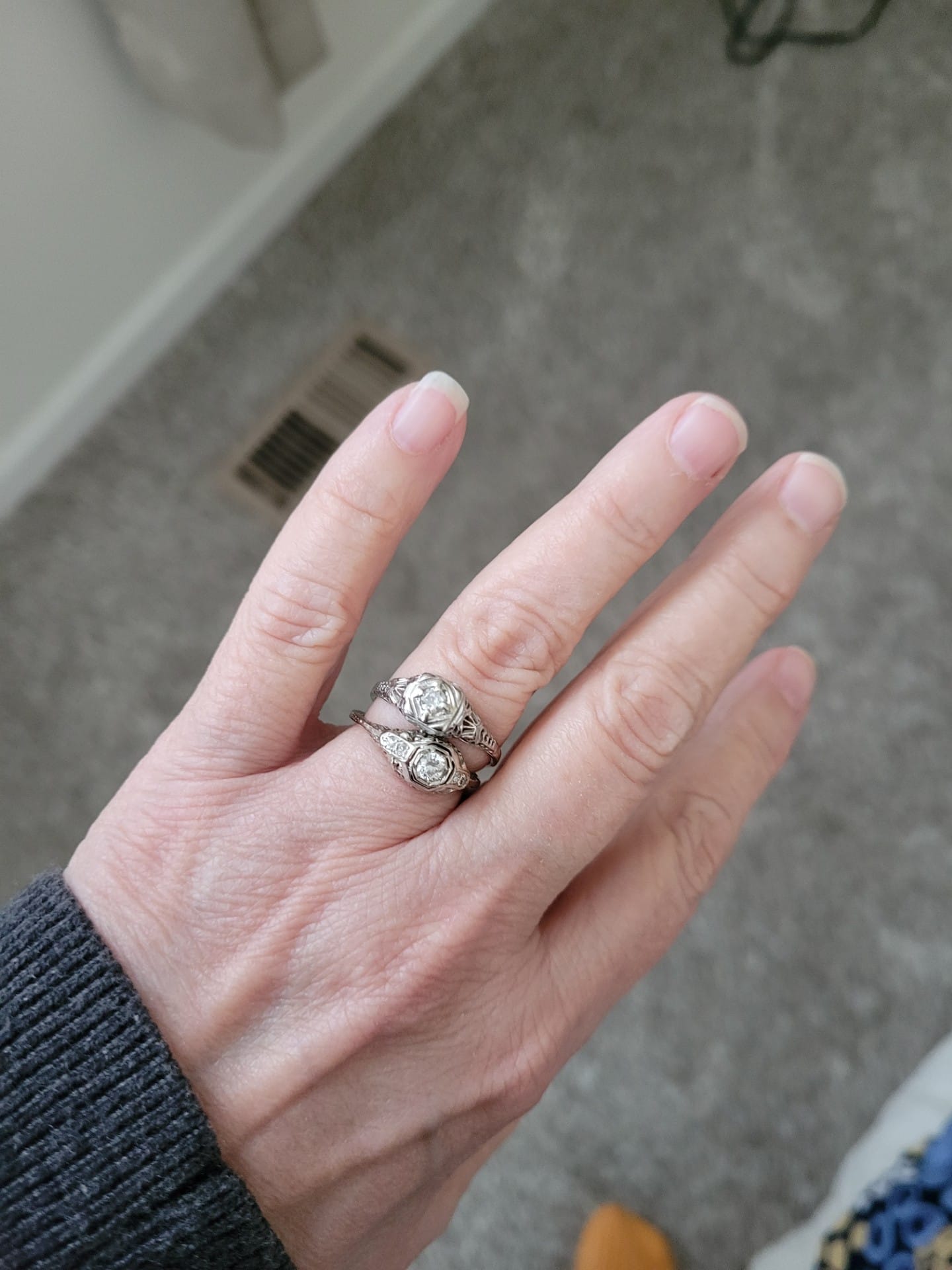
I just got my mom to hand down my grandmother’s engagement ring, and I can’t stop marveling at how much it resembles mine. It got me thinking about all the ways my mom and I seem to be on the same wavelength. For example, we’ll head to the grocery store separately and, without saying a word to each other, come home with the same ingredients and cook nearly the same meal. Coincidence? Maybe. But I can’t help wondering if there’s more to it.
The funniest example is when I used to room with my cousin, Mary. I went to show her my new hobby! I had decided to take up needlepoint. Shocked, I dropped my materials and jaw when I saw her working on her circle material stretchy/holder thingy. Was there a recessive gene running in our family that was somehow triggered on that specific day to stitch little Xs in a pillow case? That was 30 years ago, and I still haven't gotten over it.
Sometimes the similarities are uncanny: one famous pair of twins separated at birth reunites in old age and finds that they’ve both married men named Jim, are deeply religious, and even enjoy goofing around for the camera. My brother-in-law was adopted. He found his long-lost brother, and they lived just blocks from each other. Both loved antiquing and throwing huge Halloween costume parties!
I mean, come. ON!
While the environment certainly plays a role, stories like these make you wonder how much of our tastes and talents are in our DNA.
There’s some science to back up that feeling. Research shows that the way we perceive certain flavors is coded in our DNA, Smithsonianmag.com. . For example, whether broccoli tastes pleasantly bitter or downright awful can depend on a specific taste receptor gene you inherit. Studies of identical twins suggest that nearly half of our food preferences may be inherited from our genetic makeup, smithsonianmag.com. So, if you can’t stand cilantro but your sister dumps it on everything, you might have different gene versions that affect your taste buds. Knowing this makes my mother-daughter dinner coincidence seem less bizarre, we probably share a built-in love for a fancy meal!
It’s not just about food, either. Our senses and style preferences may also have genetic roots. I’ve always thought personal style was entirely individual, but it turns out “fashion genes” might be a thing. Some studies suggest specific genes tied to sensory perception, mood, or personality can influence what clothes or jewelry we’re drawn to. talktalknigeria.com.
For instance, a person who’s genetically more sensitive to textures might naturally prefer soft fabrics, while an adventurous spirit (which has genetic components) might gravitate toward bold, funky outfits. Of course, we also pick up style cues from our parents’ closets and hand-me-downs, but it’s fascinating that part of our aesthetic taste could be hidden in our DNA blueprint.
Even our talents and creative leanings may run in the family deeper than we think. We’ve all heard of musical or artistic families where gifts keep appearing in each generation. Was Mozart’s genius taught, or was it in his blood? Modern research leans towards a mix of both, but genes are significant. Psychologists note that creativity and artistic interests can almost certainly be inherited blog.genleap.co. For example, there are genes linked to musical aptitude and even to tone deafness (about 80% of tone deafness is genetic!). So if you belt out tunes just like Dad or you and Grandma share a knack for sketching, it might not be mere family tradition, you could have a talent gene (or several) at play. This genetic influence isn’t a guarantee of skill, but it gives you a head start on specific abilities or preferences.
My grandma’s ring had been tucked away in storage for decades, so I chose mine with zero knowledge of it. Was it a coincidence, or did I somehow inherit her eye for jewelry style? I’ll never know for sure, but it’s a heartwarming reminder that maybe our loved ones live on in us in surprising ways. From secret family recipes to matching rings across generations, I’m left with a warm, curious feeling that nature might have an elegant hand in shaping our favorites.